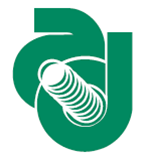Speaker
Description
Optional extended abstract
The CMS Tracker will be replaced in the next decade for operation at the high luminosity LHC. Several layout options are under consideration, which include modules with the capability of delivering information to be used in the L1 trigger. One such module would be constructed of two layers of microstrip sensors a few cm in length, and separated by a few mm, with both sets of microstrips sharing the same front-end readout chips.
The CMS Binary Chip is designed for the readout of such short silicon microstrips and has been constructed in 130 nm CMOS technology. It has 128 channels which can be DC coupled by wire bonding to sensors of either n- or p-type silicon which produce opposite polarity signals. The CBC is a successor to the APV25, used in the current tracker, and has several similar features but reads out binary information only. The binary data are stored in a 256 deep pipeline clocked at 40 MHz and transmitted in an unsparsified format in response to an incoming trigger. Other new features include on-chip DC-DC supply voltage conversion. The first version of the CBC was delivered in 2011 and its performance has been successfully studied in the laboratory and in a test beam.
With a binary front end the CBC is well suited to adapting for use in “stacked” modules in order to promptly identify hits associated with high transverse momentum particles. A second version of the CBC is now in the final stages of design to be used in this way. CBC2, also designed in 130nm CMOS, increases the number of input channels to 254 and will be bump-bonded, on a 250µm pitch, to the substrate. It incorporates logic to identify L1 trigger primitives in the form of “stubs”: high transverse-momentum candidates which are isolated from the low momentum background by selecting correlated hits between the two closely separated microstrip sensors.
The main features of the CBC and results from tests will be presented. The status of the CBC2 design and its additional functionality, including coincidence logic for trigger features, which allows rejection of wide clusters and includes offset correction to account for the position of the module in the R-φ plane, will be described.
for the collaboration
CMS

